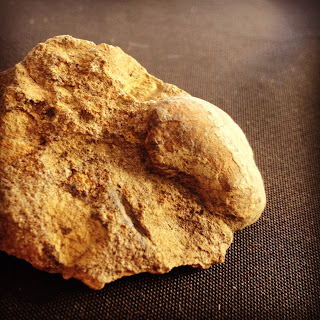In the area I found the plant fossils on the Central Coast I also discovered a bean. Well, I thought it was a bean... then I realised it had what looked like legs, which struck me as odd, because as far as I knew, beans don't have legs. I consulted my trusty 'Introduction to Paleobiology and the Fossil Record' and Google, and discovered it was an Ostracode!
So what exactly is an Ostracod? Ostracodes are a type of crustacean arthropod, that is an armoured, (mostly) water dwelling, shell covered, animal. They are also known as 'seed shrimp' (obviously I'm not the first person to mistake one for a bean). They have two small shells that hinge along the back, think pipi, and the animal is contained within the two shells. They first appear in the Early Cambrian, about ~600Ma, and different types become more prolific at different times, some survived to the present day. Which makes them pretty remarkable in my books. They can be quite useful in reconstructing the environment of the stratigraphy in which they are found. There are even Ostracodes that bioluminesce.
I also did some reading at the Australian Museum, in a large tome titled 'Fossil Invertebrates' which outlined six main different types of Ostracode. I was hoping that the descriptions might help identify the little bean I found, but it could come from a number of orders. Here are some pictures of the little critter. In the picture that includes my stubby fingers you can see the appendages poking out from between to two shells, with a better contrasted close up second from the bottom!







No comments:
Post a Comment